Having reviewed a number of premium smartphones over the past couple of years, I have always wanted to try out Huawei’s Mate series of premium devices that somehow never made it to India. Upon asking Huawei numerous times at briefings the answer always was that India as a market was not ready for the Mate series.
[youtube https://www.youtube.com/watch?v=y7a77QDNljA]
But all of that changed this year and you could partially blame (or thank) Apple for it because it single-handedly broke the ceiling with their skyrocketing, yet desirable iPhone models this year, taking the ultra-premium smartphone range all the way up to a staggering Rs 1.45 lakhs.
When Apple launched its new iPhones in India, they also left a huge price gap giving Android smartphone manufacturers plenty of room to flex their abilities and introduce features in their premium smartphones that would have otherwise been too expensive to include even in their premium flagships.
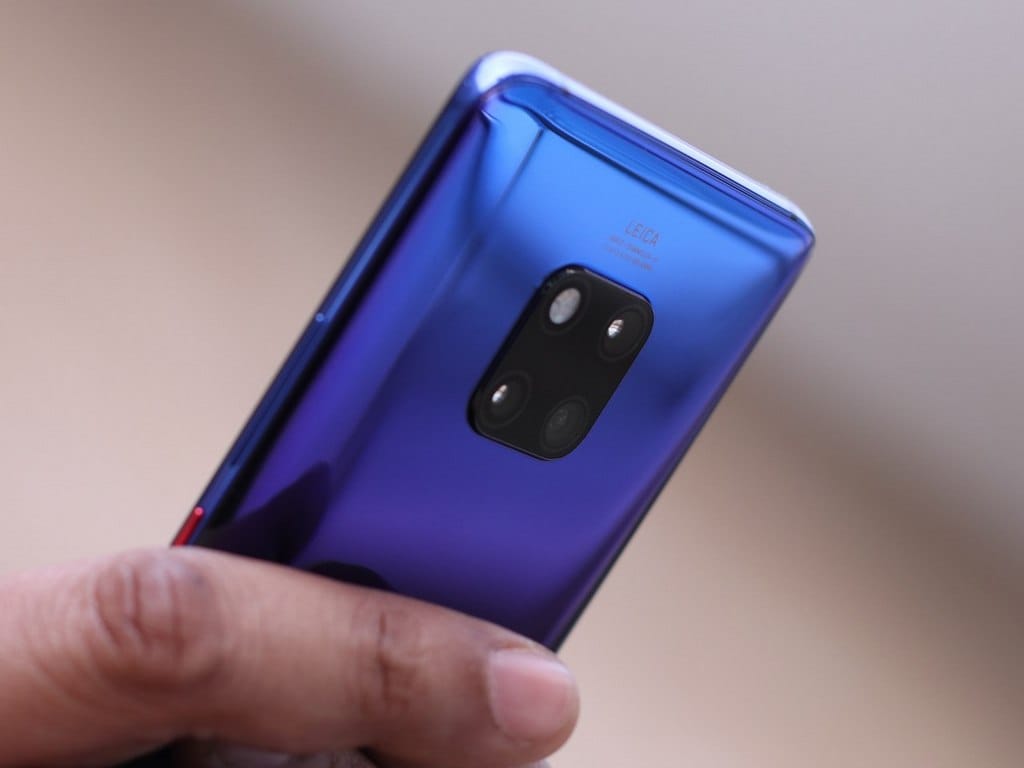
The Huawei Mate 20 Pro. Image: tech2/Omkar Patne
So we now have the Huawei Mate 20 Pro with an in-display fingerprint reader (that works), 3D face unlock, a massive 4,200 mAh battery, wireless charging capabilities that can not only charge the phone, but charge other phones wirelessly and that camera (all three of them) that will make you think twice about carrying your DSLR (and all of its lenses) on your next vacation; all packaged a beautiful design that would make Google Pixel 3XL owners slide their phones back into their pockets in shame.
Oh, and it’s even priced, lesser than the iPhone XS Max, the Google Pixel 3XL even though it performs on par with them.
After using the phone for two weeks, I discovered that even a smartphone critic like myself has little to complain about!
Huawei Mate 20 Pro Camera: 9/10
It is the most critical component that will make or break buying decisions these days, and the Huawei Mate 20 Pro impresses all the way even when you compare it with the Pixel 3XL and the iPhone XS (or iPhone XS Max) that are a lot higher up the price range.
First, there’s the camera setup with all of its AI smarts will make you wonder why you need to drag along your heavy DSLR (and its lenses) on your next vacation.
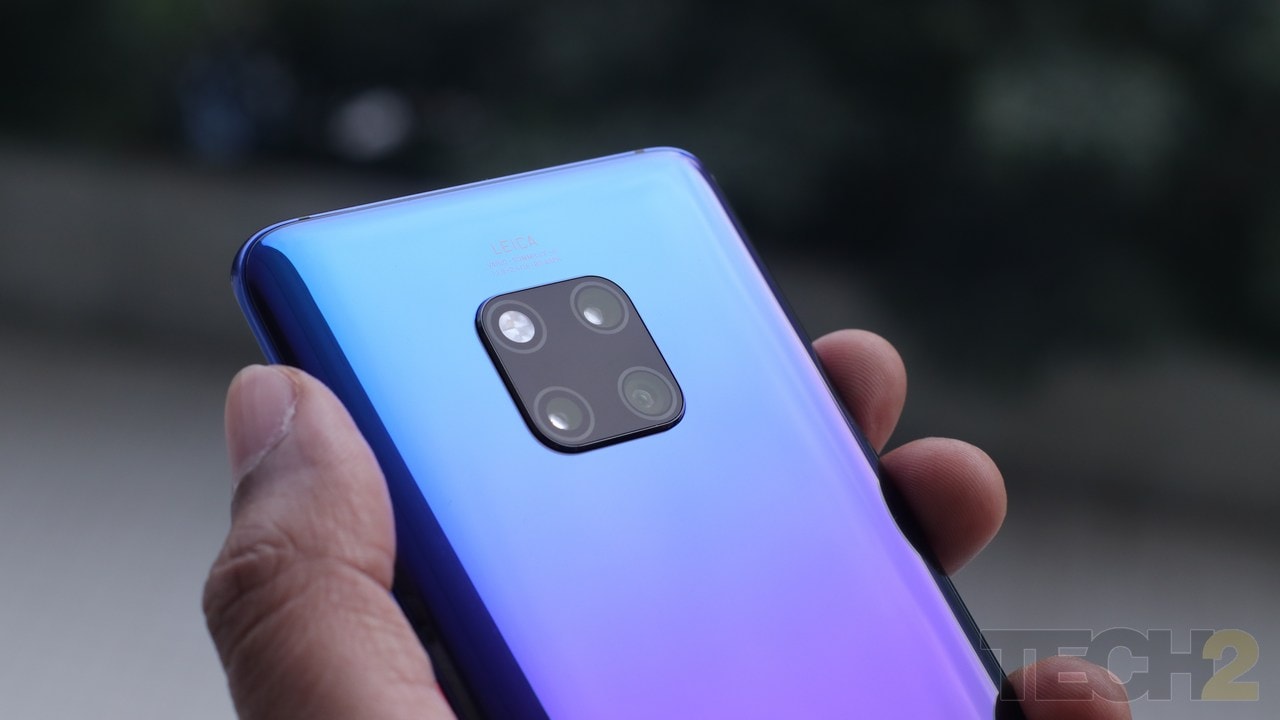
The Huawei Mate 20 Pro. Image: tech2/Omkar Patne
Ultra-wide angle lens
Huawei replaced the standard monochrome sensor this year and went with an ultra-wide lens with a 20 MP sensor. What it also did was add autofocus to it, which is something of a rarity in smartphones with ultra-wide lenses this year.
What this lets you do, is click some mind-blowing macro shots (up to 2.5 cms close to your subject) that showcases a ton of detail, are super sharp and Huawei also lets you blur that background, making those photos look really professional. Oh! As for those ultra-wide angle shots, they look spectacular and will get you plenty of additional likes on Facebook when you post photos of your next vacation. And for once, the ultra-wide angle lens on a smartphone is backed by a good sensor. This coupled with the Huawei’s AI capabilities (thanks to its dual NPUs) also lets it shoot incredible low light photos at night that give a completely different perspective thanks to the ultra-wide angle Leica lens.
Telephoto lens
The 8 MP sensor paired with the telephoto lens gets you 5X optical zoom, but thanks to the camera’s AI smarts let you zoom in up to 10X, digitally. And no! This is not a gimmick.
The smart image processing combined with the telephoto lens (which is the only lens to feature OIS in this setup) will let you click amazingly clear photos with little noise whether you shoot indoors, outdoors or even in low light. Think of it as the Pixel 3XL’s Super Res Zoom on steroids. You can check out the samples in Flickr album where I have zoomed in on a building on a hazy smog-filled evening in Mumbai at Marine Drive. Huawei’s noise processing is indeed impressive and looks a lot better than the results coming out of Google’s Super Res Zoom which delivers Prisma-like images that look like oil paintings.
Standard shooting
Don’t be shocked by that 40 MP figure of the Mate 20 Pro’s primary shooter. It uses Pixel binning and will basically scale down the image using SuperHDR to a 10 MP picture. But those results despite the small pixel count pack in a lot of detail and showcase great dynamic range.
For once, the camera does not bump up the contrast like the Google Pixel 3XL. The images don’t look as fake or artificial as the Pixel 3XL’s either. Huawei seems to focus on noise reduction and sharpness (some may find it these over-sharpened) to deliver more natural-looking images than the Pixel 3XL, which is its only real competitor, with lesser hardware capabilities.
You can check out the camera and video samples of the Huawei Mate 20 Pro in the scrollable gallery below or click here to go to Flickr album.
While the Mate 20 Pro’s Portraits come out sharp, the edge-detection falls a wee bit short of the Pixel 3XL. The Pixel 3XL is still the master of Portrait shots, thanks to its Synthetic fill flash, but if you are looking at natural-looking portrait images, the Mate 20 Pro and its black and white portrait mode will not disappoint you. The selfies, however, did not turn out as sharp as I wanted them to be.
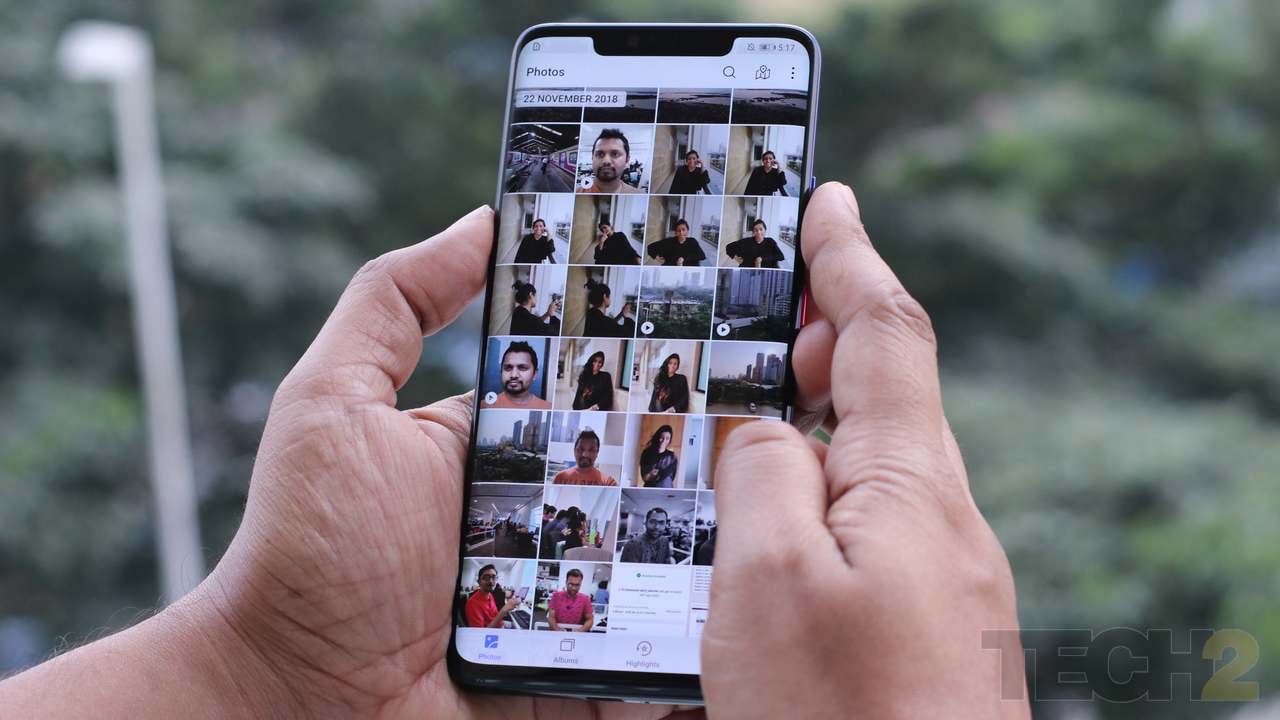
The Huawei Mate 20 Pro. Image: tech2/Omkar Patne
The Mate 20 Pro is one of the few phones that I did enjoy shooting in the dark. The images come out clean and with no or low noise, but I just loved switching to the ultra-wide lens and getting a completely different perspective of what would otherwise be a regular street scene. There’s a photo of commuter staring at the indicator at the at Mumbai’s Churchgate station that was also shot using the ultra-wide lens and it came out pretty well with low noise, turning a regular shot into something really intriguing.
There are few problems here that I can pick out. The Night mode which takes long exposure shots will kill details thanks to the noise reduction, even if the shots look great when viewed from afar. The Google Pixel 3XL does better with its Night Sight mode, provided the scene is not too dark, like under street lighting conditions. The ultra-wide angle lens showcases some noticeable barrel distortion around the edges, so it’s best if you keep your subjects or objects away from the corners of the frame when shooting.
The AI mode has grown even smarter. How smart? Well, it knows a regular scene from a city skyline or a landscape and would automatically switch to the ultra-wide angle lens before I did. The AI did interfere less with my shooting and I found it more helpful as compared to on the P20 Pro, which seemed like it was interfering when shooting.
Video
Sadly, despite all of its processing power, Huawei does not offer 4K 60 fps video on the Mate 20 Pro. While 4K 30 fps shooting looks great in any kind of lighting, the Full HD 30 fps and 60 fps footage looked a little blurry when panning. Indeed, the video capture does not beat the iPhone XS, but it does pack in some really cool AI-enabled shooting capabilities that work really well and seemed unbelievable to many.

The AI-enabled 3D filters applies a black and white effect keeping the subject in colour.
The AI-enabled 3D filters work beautifully! The AI Portrait Colour effect was my favourite that detects people in the frame, keeps them in colour while greying out the background. It does this very efficiently provided your subject is not zipping across the frame. It can even track subjects when they are dancing at a slow pace. It definitely isn’t gimmicky but and it managed to impress our video editor who was blown away as to how the camera pulled it off. Huawei surely uses more than one camera for this video trick as the feature is not available on the selfie camera.

My second favourite filter was the live blur effect.
Another filter was the blur filter that again tracked the subject in the frame and applied a live blur effect separating the subject from the background. While the blur effect was a bit too strong for my liking, it is indeed mind-boggling as to how the smartphone can pull it off.
One detail that I did not like was the transition between lenses while shooting video.
Because the phone is so large, you will need two hands to use the camera. This also makes using the Zoom control a bit difficult. The software control that lets you zoom in and is not as smooth as the one the iPhone XS or the buttery smooth Pixel 3XL, which makes the transition between lenses a bit jittery and unpolished.
So if you are recording video its best you stick to either the ultra-wide or the wide or the telephoto lens and shoot separately as the going from standard to telephoto while recording looks a bit unfinished. Again, thanks to those big jumps from lens to lens, the camera will take its own sweet time to lock focus on your subject every time, making the output a bit messy.
And now that we are done with the camera, it’s time I take you through the other interesting bits about the Huawei Mate 20 Pro.
Huawei Mate 20 Pro Build and Design: 9/10
Huawei launched its Mate 20 Pro smartphone in India in two colours, Emerald Green and Twilight. While the updated Twilight gradient finish on the Mate 20 Pro will get you a lot of attention, I would have preferred the Emerald Green which looks luxurious and comes with a unique texture as opposed to the mirror-like finish on the Twilight model. The Twilight colour too looks gorgeous and is a unique blend of blue, magenta and black. Unlike the P20 Pro which featured the gradient finish only on the rear glass screen, Huawei’s designers took things a step further and applied it to the metal frame around the sides as well.
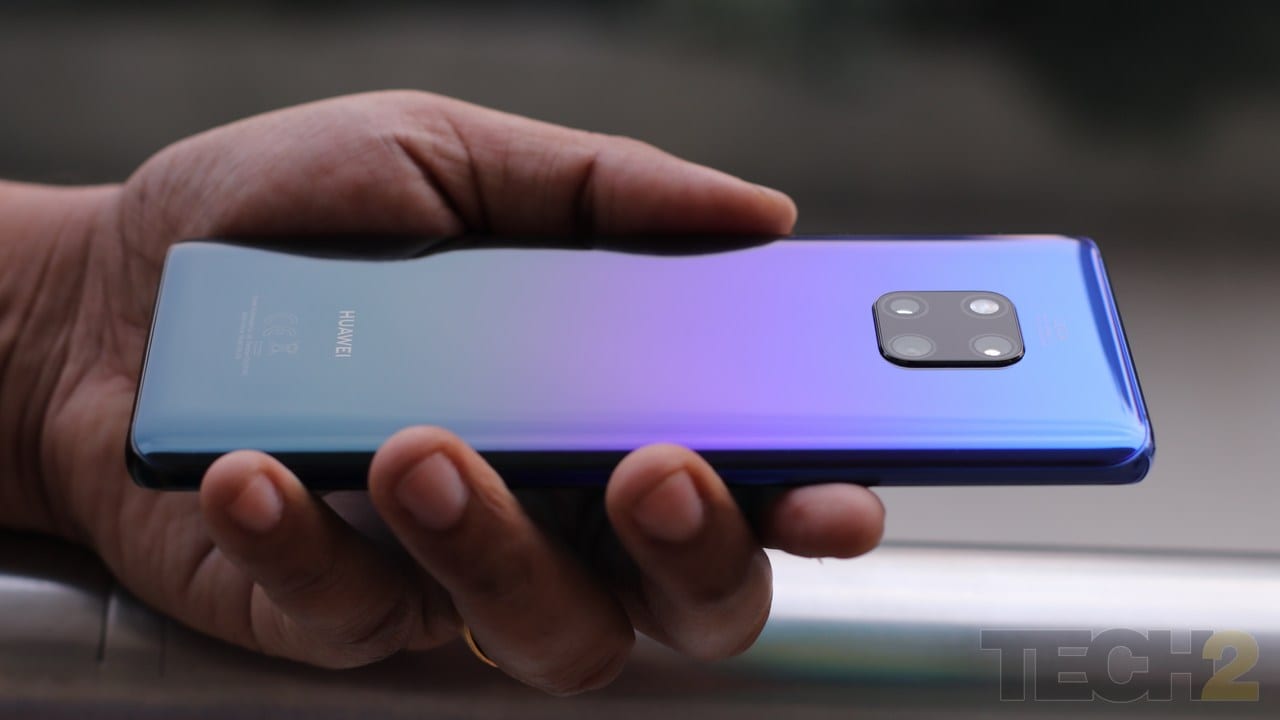
The Huawei Mate 20 Pro. Image: tech2/Omkar Patne
The design does look a bit like a Samsung Galaxy S9, but is a lot slimmer and sexier, with the display going beyond “Infinity” and almost reaching the metal frame on the left and right sides. You really need to use this phone without a case to thoroughly enjoy the efforts put into its design.

The Huawei Mate 20 Pro. Image: tech2/Omkar Patne
Move to the back and squared camera setup with rounded corners again gives this smartphone its signature style and I prefer it over Samsung Galaxy A9’s in-line camera setup, which looks like an afterthought.
Another reason to like the camera design on the back is that it now does not wobble as much like the P20 Pro did when placed on a flat table.

The Huawei Mate 20 Pro. Image: tech2/Omkar Patne
Oh! How I wished Google had created a Pixel that looked like this!
One detail to note is the placement of the dual speakers. While the first one of the left sits inside the notch alongside the front camera, the bottom speaker fires through the USB-Type C port.
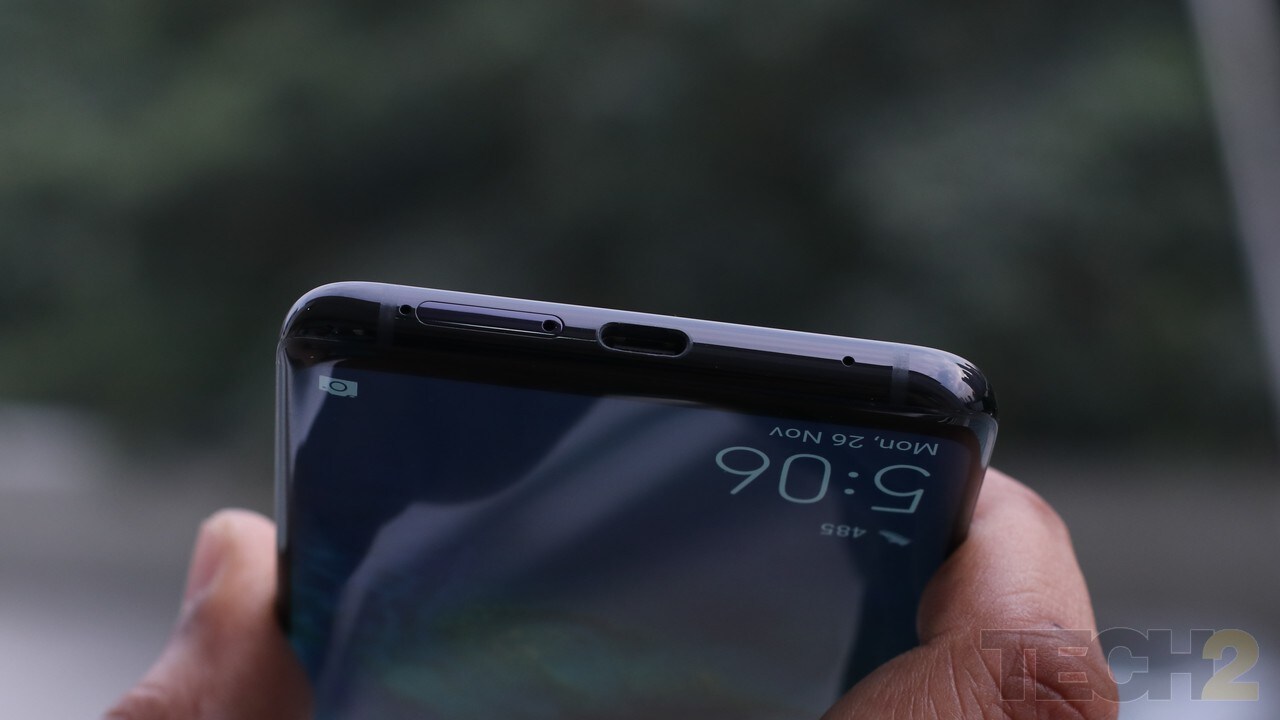
The Huawei Mate 20 Pro. Image: tech2/Omkar Patne
This is a really odd placement for a smartphones' speaker, but as mentioned in the Performance section, it did not do much damage which is a bit surprising because the smartphone is IP 68 dust and water resistant. In fact, I like how the design department got their way with a smartphone design that is completely symmetrical.
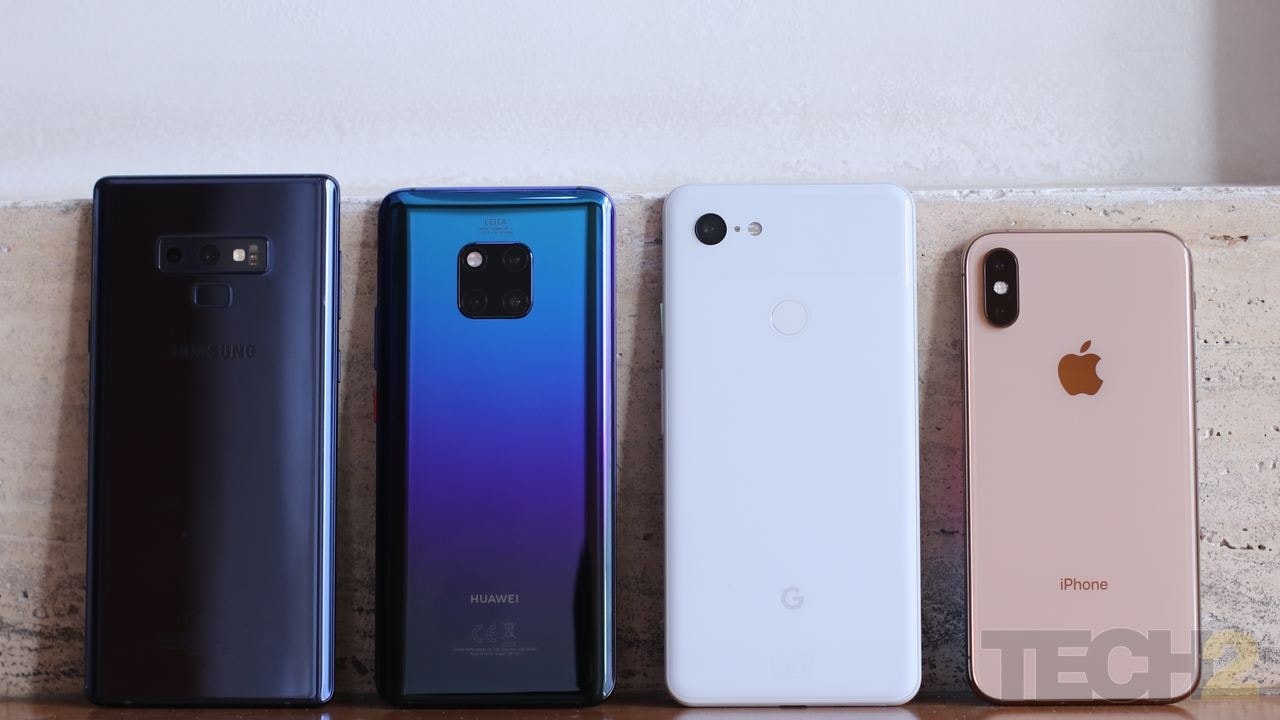
The Mate 20 Pro does stand out from the crowd. Image: tech2/Omkar Patne
Indeed, there is a trend among Android smartphone makers with a strong emphasis on design these days which makes Apple’s outrageously priced iPhones look bland and boring.
Huawei Mate 20 Pro Display: 8/10
The Huawei Mate 20 Pro’s AMOLED display is a bit oversaturated out of the box. For those who do not like the oversaturated look, you can head into Settings, Display and then switch from the default Vivid colour profile to a more realistic-looking Natural colour profile.
Personally, I preferred the Natural colour setting and this combined with the ulta-sharp (538 PPI) 6.39-inch display made for an immersive gaming and video viewing experience (also part in thanks to the dual speaker setup).
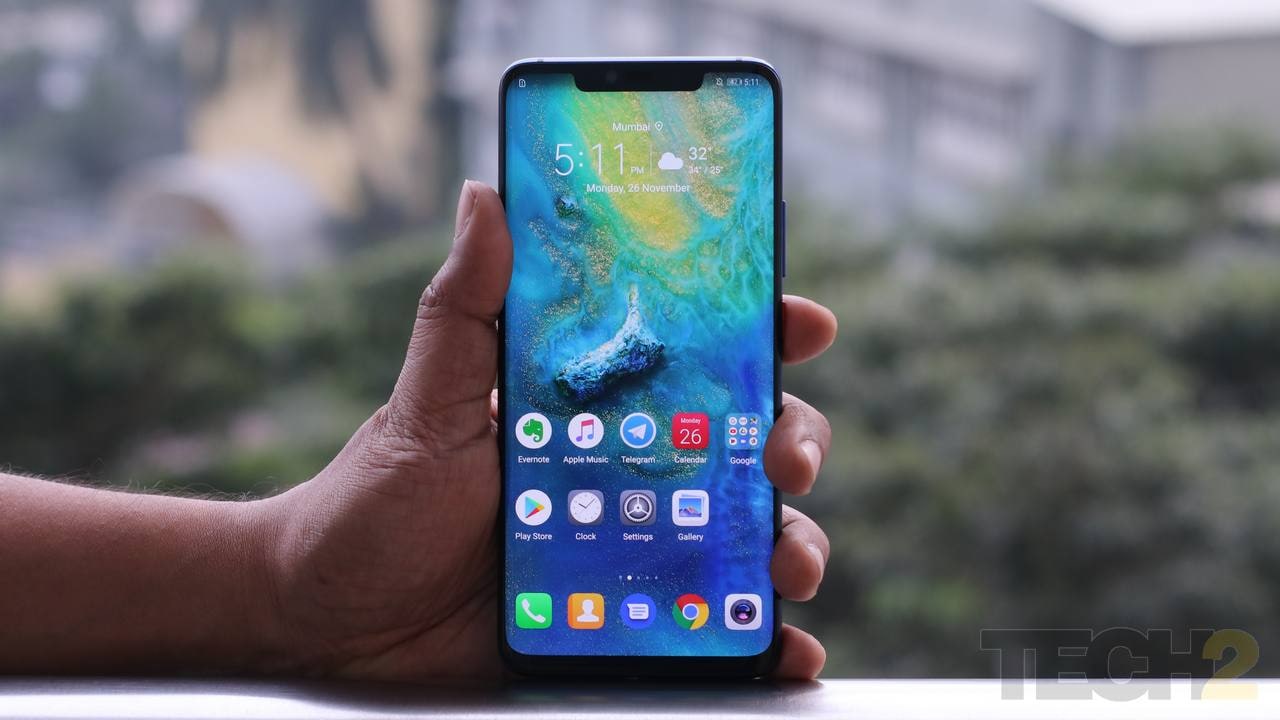
The Huawei Mate 20 Pro. Image: tech2/Omkar Patne
The viewing angles were pretty good, and the text looks sharp along with images all displayed beautifully thanks to EMUI’s software optimisations. Even outdoors, the display was sufficiently bright for an AMOLED unit.
But there are a few problems, not with the display itself, but the way Huawei’s EMUI has been tuned it use it while displaying video. Open YouTube or Netflix, and you will notice the colour profile changing while viewing videos with display horribly oversaturating the colours. Even the blue highlight colour used in the interface (volume slider, notifications toggles etc.) is displayed as purple. So you can imagine how badly it oversaturated the colours while playing video. This bad processing scrambles the colours a bit and messes up the hues and will even oversharpen the video content, which made for a not so great video viewing experience. Some may prefer the oversaturated look, but it's a bit too much in my opinion.
Thankfully, you can prevent this oversaturated mess while viewing videos by simply heading into Settings>Display>Colour and Eye comfort. Out here, simply switch off the Natural tone setting (on by default) to turn off the extremely vivid colour profile, which drastically improves the video viewing experience.
Huawei Mate 20 Pro Features: 9.5/10
There’s really not much to complain about here. Right out of the box, the Mate 20 Pro offers possibly the best hardware you can get on any smartphone (across iOS and Android) in 2018. There’s a 6.39-inch AMOLED display, that is HDR-10 compatible and comes with a screen made of Corning’s Gorilla Glass.
Inside, there’s a Hisilicon-made Kirin 980 SoC paired with 6 GB RAM and 128 GB of internal storage. The storage is expandable but only using Huawei’s own Nano Memory (NM) cards (which are supposed to save space for other components).
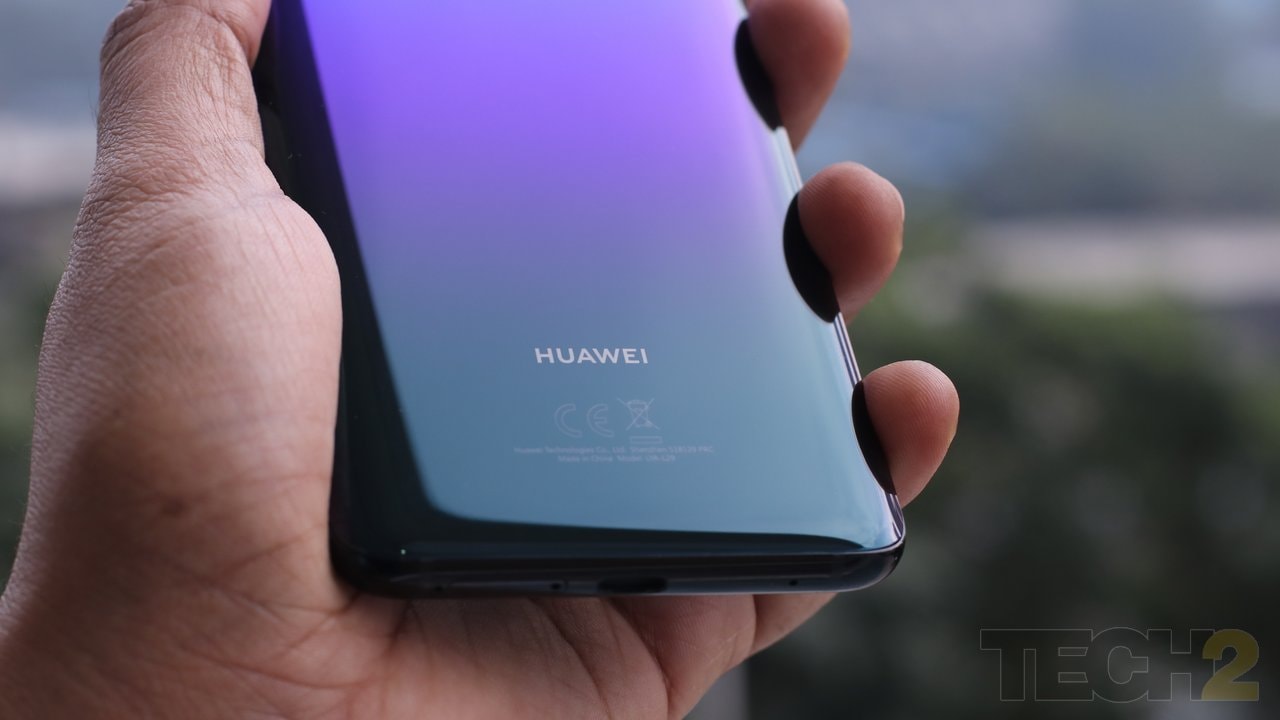
The Huawei Mate 20 Pro. Image: tech2/Omkar Patne
The Mate 20 Pro’s camera chops include a 40 MP (wide angle lens, f/1.8 aperture) + 20 MP (ultra-wide angle lens, f/2.2 aperture) + an 8 MP (telephoto lens with an f/2.4 aperture). A 24 MP front-facing camera takes care of selfies but is also a part of the other modules that make up Huawei’s 3D face unlock system to help you unlock your smartphone securely.
Connectivity options include dual-SIM slots with support for 4G VoLTE, GPS (L1+L5 dual band), Wi-Fi (802.11 a/b/g/n/ac), Bluetooth (v 5.0), NFC and the usual array of sensors which also includes a colour temperature sensor and an in-display fingerprint reader.
All of the above is handled by a massive, 4,200 mAh battery that can be charged super fast, using the in box, 40 W SuperCharger adapter. The device runs Huawei’s own EMUI software with Android 9 Pie as the base.
Huawei Mate 20 Pro Software: 8/10
I have never been a fan of Huawei’s EMUI software which also runs in Honor’s range of smartphones. The software always felt heavy, with minor stutters in animations and transitions, but things were different this time around on the Mate 20 Pro.
The phone was incredibly fast considering that it runs a Kirin SoC. The 980 with 7 nm manufacturing process didn’t show a hint of slowdown and kept the software running buttery smooth without any lag.
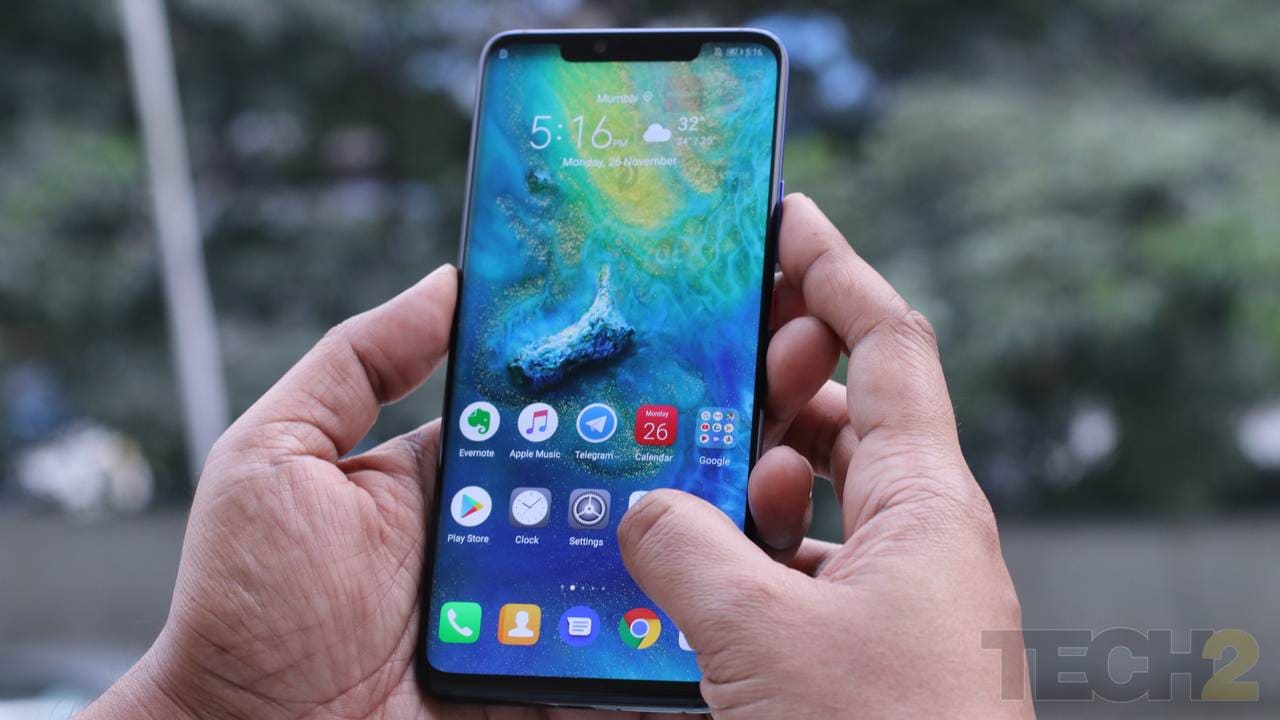
The Huawei Mate 20 Pro. Image: tech2/Omkar Patne
Another reason to like EMUI on the Mate 20 Pro is because it packs in Android 9.0 Pie underneath, so you really don’t have to wait another six months until the latest update from Google reaches your flagship Android smartphone.
I really like the gesture-based navigation on the Mate 20 Pro with its slide to go back gesture. You can swipe inwards from both the left and right edges of the display, to go back to the previous page, or the previous app like the usual back button does. Thanks to this, you can use your apps in full screen and make use of every millimetre of that gorgeous AMOLED display. Using an iPhone XR as my daily driver, I love iOS’s gesture-based navigation system. EMUI’s gestures are not all that polished, but it will probably get there with future software updates.
Huawei Mate 20 Pro Performance: 9/10
Over the years we have come to expect slightly low performance from Huawei’s Kirin chipsets. But this year, Huawei overtook Samsung to deliver its own 7 nm SoC and this combined with its dual Neural Processing Units (NPUs) which powers various features seems to have a severe impact on the smartphone's performance in day to day usage.
As mentioned in the software section, I never experienced any lag anywhere in the user interface. Apps opened and were kept in the background for quite a while, which also meant that I could get back to paused game after sending across an email. This phone really has no problems with multi-tasking thanks to that 6 GB of RAM, which combined with the super quick SoC (clocked at 2.6 GHz) did not break into a sweat no matter what game I threw at it.
The Mate 20 Pro's in-display fingerprint reader is the best implementation of the technology I have seen yet. It works when it is needed, but you will need to press down on the designated area of the display for it to do its job as just placing your finger on the area won't do. I found it easier to authenticate using the secure 3D face unlock system, but I'm glad that the fingerprint reader is present as most third-party apps on the Play Store use the fingerprint reader instead.
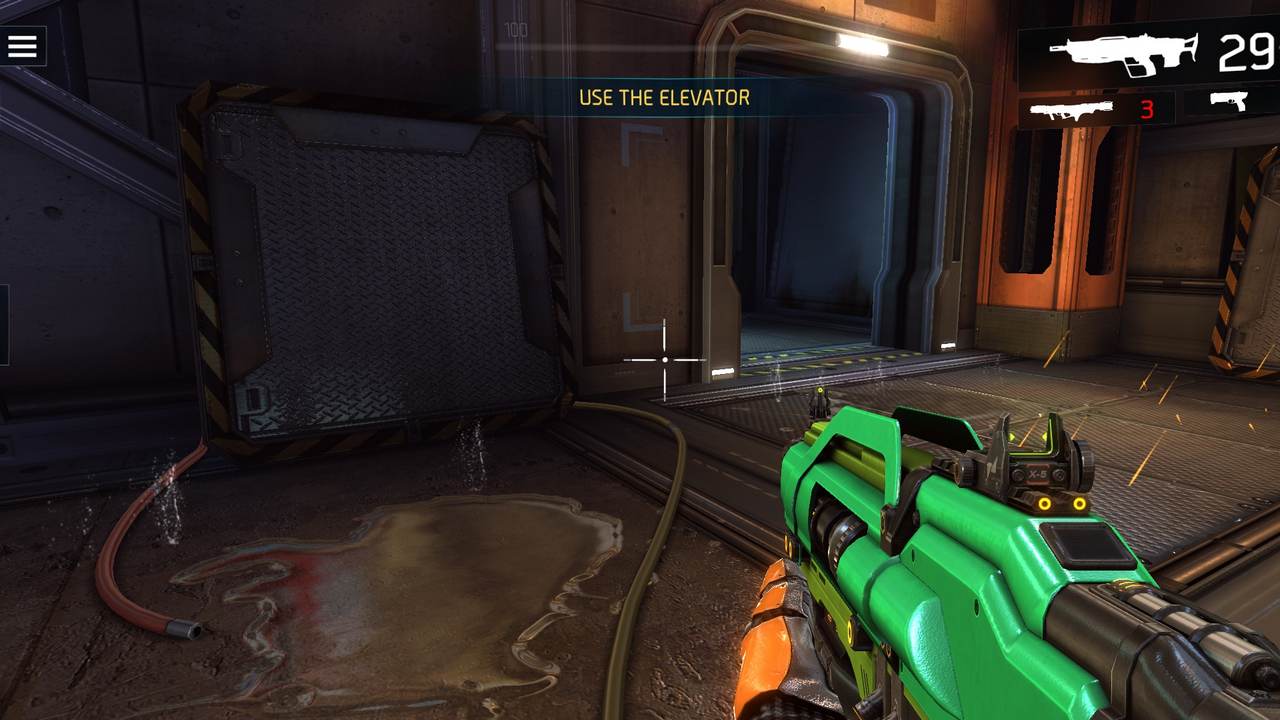
A screenshot from the game Shadowgun Legends at the highest settings on the Mate 20 Pro.
The only time the device did heat up, was when playing Shadowgun Legends at 60 fps at the highest settings. This usually heats up any smartphone we ran it on until now but the Huawei did a fine job at keeping the heat levels in check. More importantly, I was impressed at how smoothly the game ran which is second only to my Shadowgun Legends experience on the iPhone XS Max, which is double the price of a Mate 20 Pro!
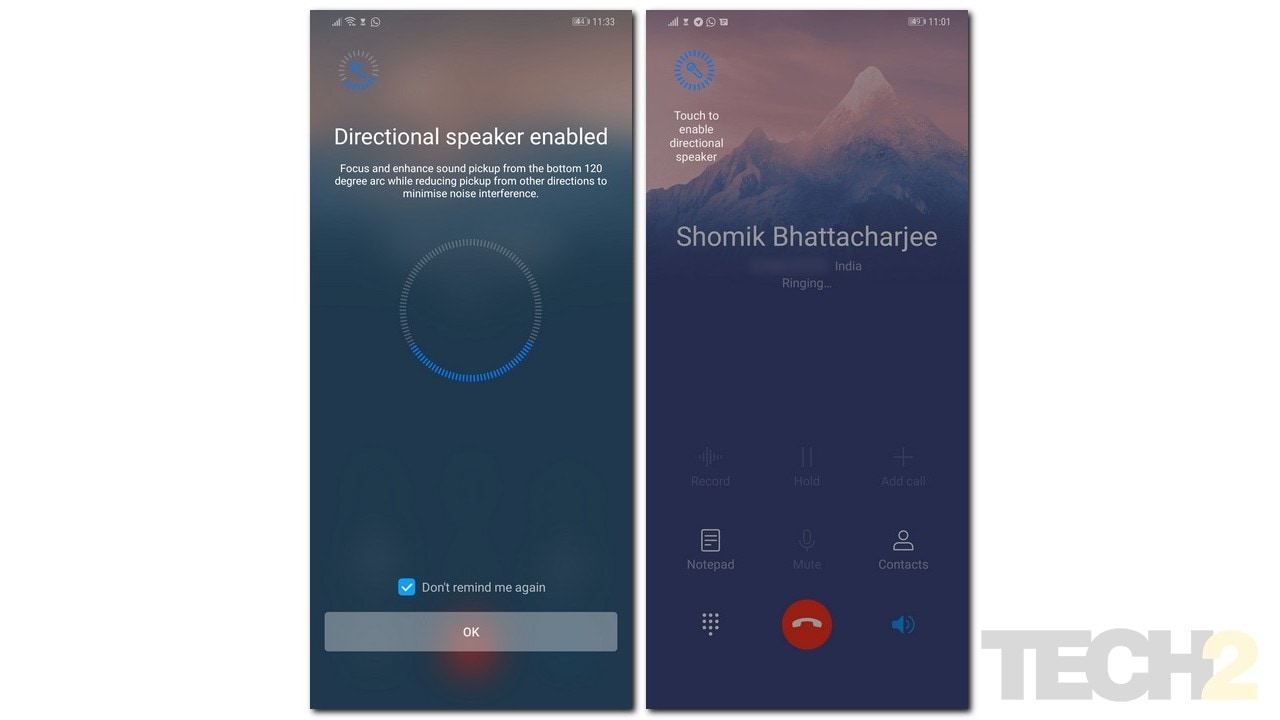
The directional audio feature on the Mate 20 Pro works really well.
Coming to audio, calls sounded crystal clear on Mumbai’s choked up networks and I loved the ability to record a call, which is built into the dialer app. There’s also a directional audio feature while placing calls that will detect and enhance sound pickup from the direction of the caller (if on a speaker) and then reduce pickup from other directions around it which minimises noise interference. I must say this works beautifully and many people who I had called did not even notice that I was far away from the phone.
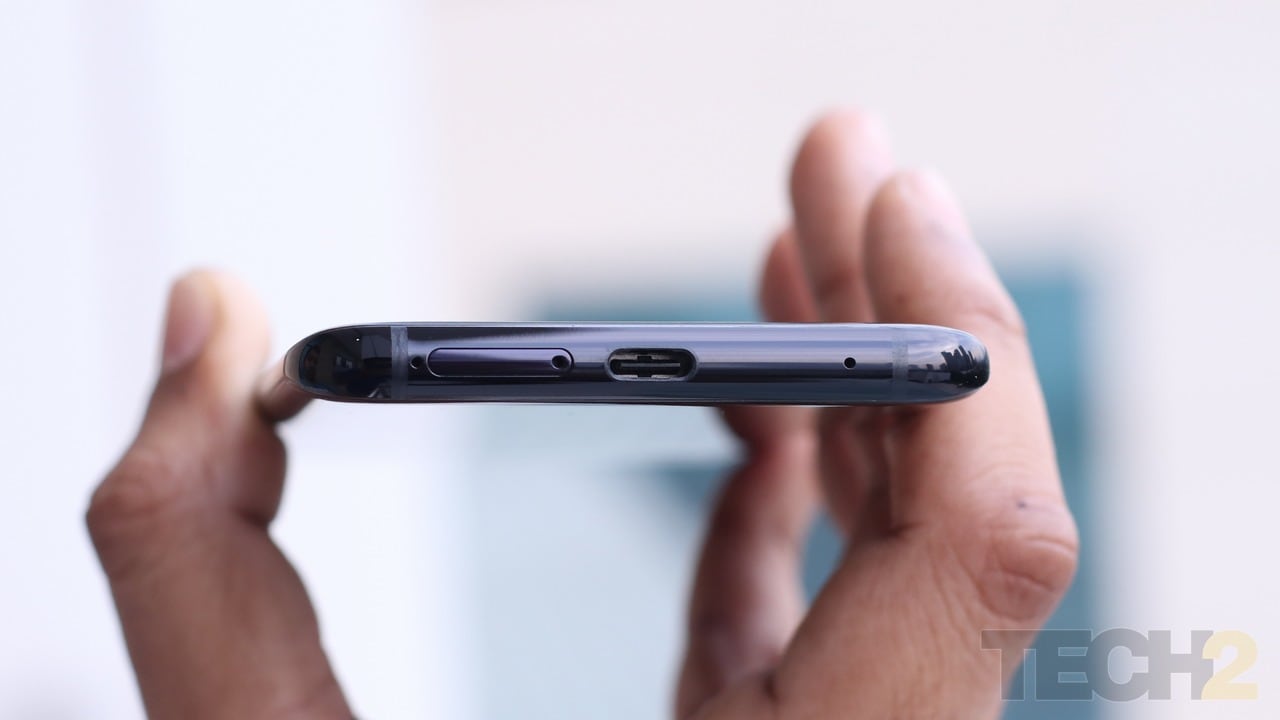
The Huawei Mate 20 Pro. Image: tech2/Omkar Patne
As for audio quality through the speakers, it sounds rich and really clear but they are not as loud as what you get on an iPhone XS, XR or a XS Max. When placed horizontally (when watching movies or playing games) the left receiver speaker did not sound as powerful as the main speaker that fired through the USB Type C port. My only problem with the use of a Type C port as a speaker grille is that the audio gets noticeably muffled when the device is plugged for charging. But given that this phone pulls off the fastest charging times I have seen in my life, the chances of it remaining plugged in are few and far.
Huawei Mate 20 Pro Battery Life: 9/10
Talking about charging times, the Mate 20 Pro will spoil you. After using a Mate 20 Pro for about two weeks, going back to my iPhone XR felt like going to the dark ages. To wait for an iPhone XR with its sufficiently large (2,942 mAh) battery to charge to a usable 30 percent made me realise that a lot of us waste a lot of time in life while waiting for our smartphones to charge.
With the Mate 20 Pro, you can literally see the charged percentage increasing the second you plug it into that 40 W SuperCharger. It feels unreal to see a smartphone destroy the OnePlus’s Dash Charge speeds, by a good 25 percent overall.
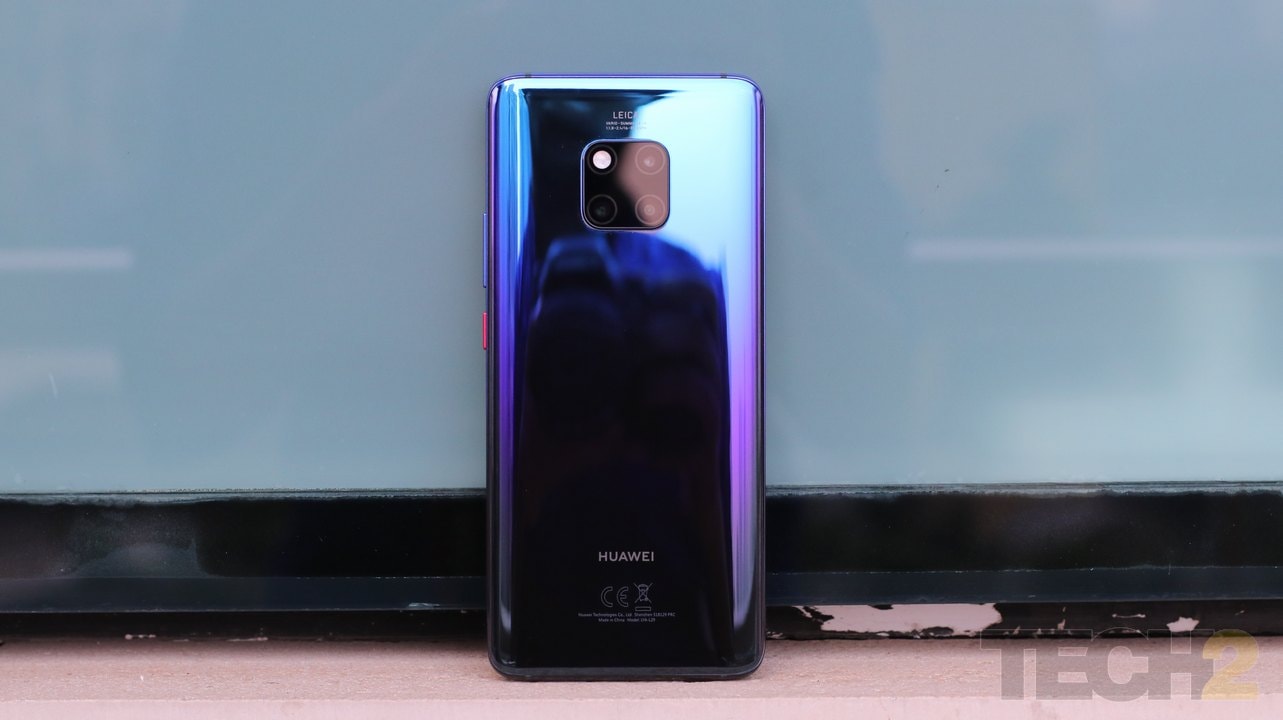
The Huawei Mate 20 Pro. Image: tech2/Omkar Patne
The phone goes from 0-33 percent in 15 minutes and then keeps up the momentum by reaching 70 percent in 30 minutes! And it keeps up with that speed up to around 90 percent in just 45 minutes! And then it slows down a bit to complete the charge in about 1 hour and 5 minutes. Mind you! These charging speeds vary and I have been able to charge the device is less than an hour at times.
And it pulls off these numbers while charging that massive 4,200 mAh battery, which is the biggest we have seen on a flagship smartphone this year.
With charging speeds this good, I really cannot complain about battery life that I found to be pretty good for a smartphone with a 6.39-inch display. In our standard PC Mark Work 2.0 Battery Life test, the phone lasted 10 hours and 35 minutes which is pretty good considering it packs in a QHD+ display. Samsung's Galaxy Note 9 however, did better and lasted 10 hours and 42 minutes.
But perhaps the coolest trick of the Mate 20 Pro is its Reverse Wireless Charging capabilities. Sadly, it’s also the one that comes eerily close to being a gimmick.
I tried charging my iPhone XR several times, and the iPhone would get charged with or without that thick silicon case on. What worried me is that the charging speed is a bit too slow. After placing my iPhone XR placed on top of the Mate 20 Pro in an hour-long meeting, the iPhone barely crept up by 10 percent. Trying it on without the case saw better results, but again, it’s just not fast enough to use it to charge a someone else’s phone like Huawei’s shows off in its advertisements. It does take a sufficient amount of time. More importantly, the effort it takes to charge another device has a sufficient impact on charge left on your Mate 20 Pro. So if you manage to charge your friend’s phone by 10 percent, be ready to see a drop of 25 percent on the Mate 20 Pro, so yes, it’s not exactly efficient.
Sadly I did not have two Mate 20 Pros lying around to test if the charging between these phones was faster either. What I also did not like is the amount of heat it generates. You cannot just chuck the two phones together in your pocket as they do warm up a bit while charging. So yes, Reverse Wireless Charging does work, just not the way we want it to work. But I love the idea of sharing some leftover power with a friend when they need it so I hope Huawei keeps working on this to make it faster and more efficient on upcoming devices that should hopefully be launched before Apple’s AirPower charging mat starts shipping!
Huawei Mate 20 Pro Verdict and Price in India
At Rs 69,990 I really have nothing to complain about. Huawei’s Mate 20 Pro has Samsung’s Note 9 for breakfast and stands neck and neck with the Google Pixel 3XL that is priced higher at Rs 83,000.
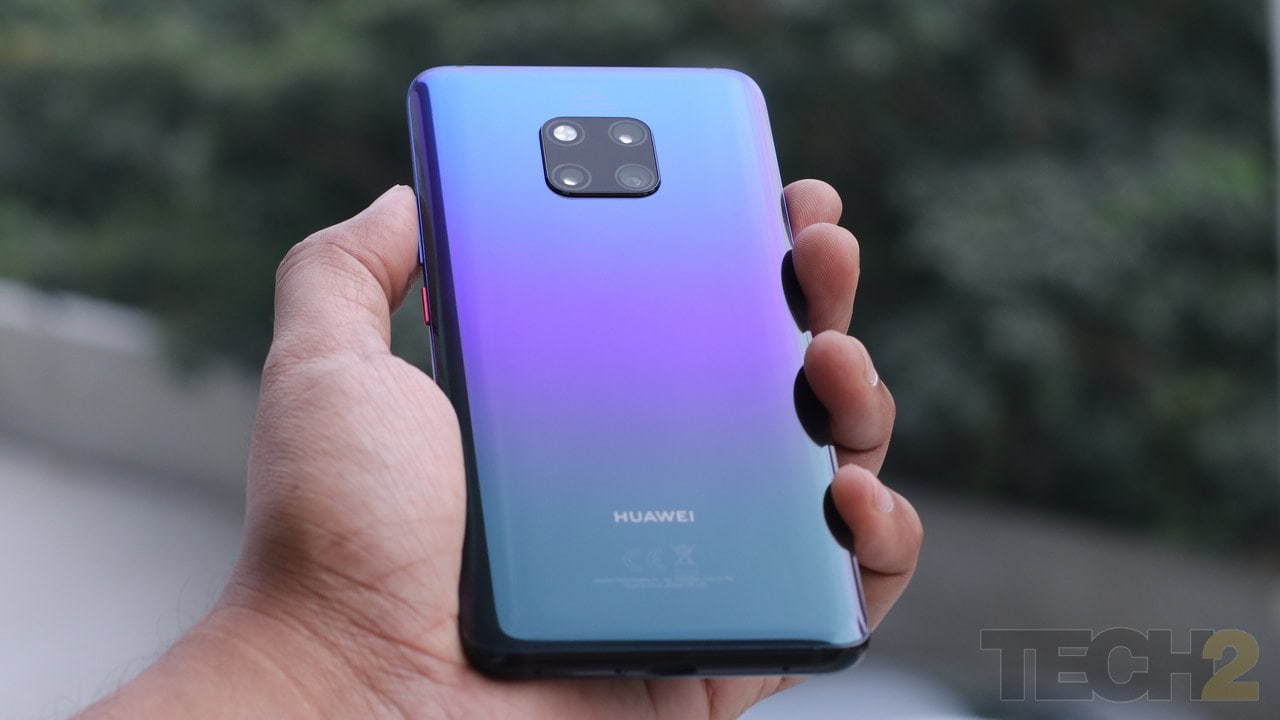
The Huawei Mate 20 Pro. Image: tech2/Omkar Patne
So which out of the three should you choose? I’d pick the Huawei Mate 20 Pro. It does not looks as boring as the Google Pixel 3XL, packs in the latest software updates with Android 9 Pie and comes with three cameras that you will switch between (either by yourself or automatically thanks to AI mode) on your next vacation. Oh yes! And then there’s the SuperCharging that can spoil any OnePlus, Samsung or Pixel fanboy out there.
Pick the Pixel 3XL if you want better-looking Portraits and video as for everything else, the Mate 20 Pro does better… by a mile!
Tech2 is now on WhatsApp. For all the buzz on the latest tech and science, sign up for our WhatsApp services. Just go to Tech2.com/Whatsapp and hit the Subscribe button.
Source

No comments: